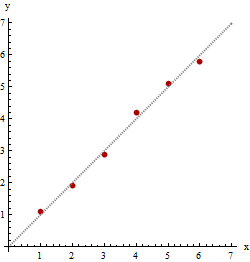I would like to understand how can I check if some points around a line have constant distance between the point and the line.
So image a normal chart(cartesian plane) with a line that is formed with points where its coordinates are: x > 0 and y > 0 so always numbers bigger then zero.
Then, when I have this line i need to check if the distances of a list of points(x,y) are constant. With "constant" I mean that the distance between the points and the line is similar. Example:
LINE: (x - y coordinates)
1 - 1
2 - 2
3 - 3
4 - 4
5 - 5
6 - 6
POINTS: (x - y coordinates)
1 - 1.1
2 - 1.9
3 - 2.9
4 - 4.2
5 - 5.1
6 - 5.8
How can I check if the difference between the point on the line and the point (of the list of points) are constant?
Thanks


